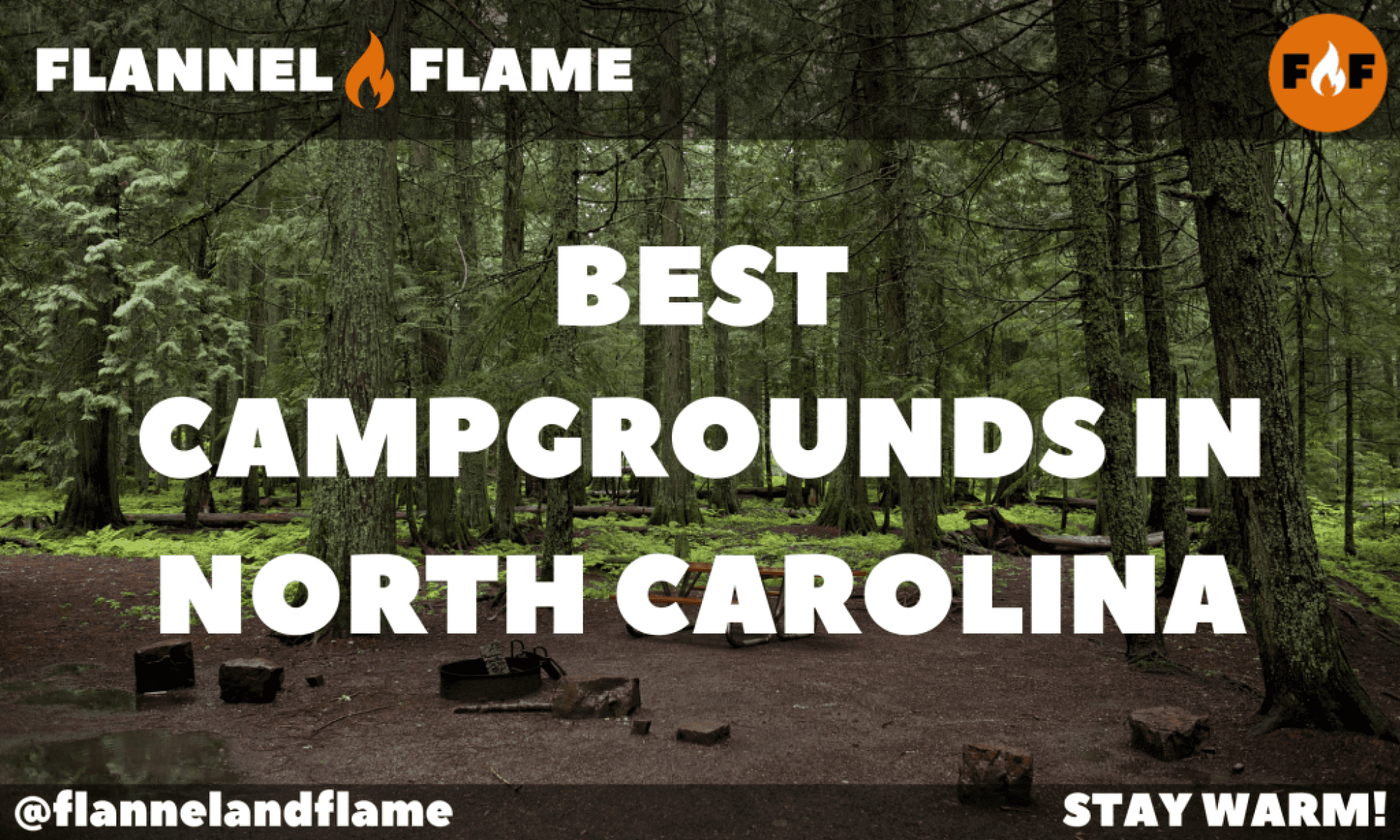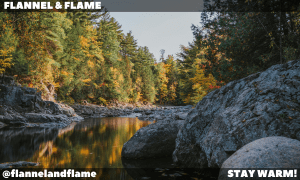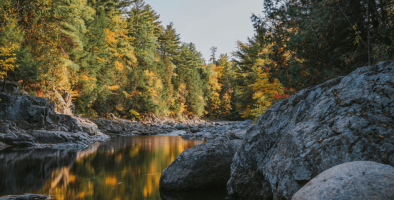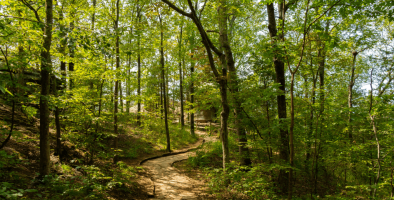Best Campgrounds in North Carolina
North Carolina’s diverse landscapes offer some of the most rewarding camping experiences in the southeastern United States. From the misty peaks of the Appalachian Mountains to the windswept shores of the Outer Banks, the Tar Heel State presents outdoor enthusiasts with an incredible variety of natural settings to pitch their tents. Whether you’re seeking mountaintop vistas, pristine beaches, tranquil forests, or rushing waterfalls, these top campgrounds showcase the very best of North Carolina’s natural splendor. Pack your gear and prepare to explore these remarkable destinations where mountain meets sky, forest meets stream, and the gentle rhythm of nature creates the perfect backdrop for unforgettable outdoor adventures.
1. Mount Mitchell State Park Campground
Number of Campsites: 9
Reservations: https://northcarolinastateparks.reserveamerica.com/
Address: 2388 NC-128, Burnsville, NC 28714
Perched near the summit of the highest peak east of the Mississippi River, Mount Mitchell State Park Campground offers a truly elevated camping experience. At nearly 6,000 feet, this intimate campground puts you in the heart of a rare spruce-fir forest ecosystem that feels more like Canada than Carolina. The dense evergreen canopy creates a hushed atmosphere, with trees that have adapted to survive harsh winter conditions and capture moisture directly from passing clouds.
Morning here brings a magical quality unlike anywhere else in the South. You might wake to find yourself literally in the clouds, with mist swirling through the spruce trees and droplets clinging to every surface. As the sun gains strength, these clouds often burn away to reveal breathtaking panoramic views of the surrounding Black Mountains and rolling blue ridges extending to the horizon. The crisp mountain air carries the refreshing scent of balsam fir, invigorating your senses as you start your day.
The campground’s small size—just nine sites—creates an intimate experience where the profound silence of the mountain is rarely broken except by birdsong or the whisper of wind through evergreen boughs. Each site is tucked among the trees, offering privacy without isolation. The ground is covered with a soft carpet of needles that cushions your steps and creates perfect natural tent padding.
What makes this location truly special is its proximity to the 6,684-foot summit of Mount Mitchell itself. A short hike takes you to the observation deck, where on clear days, visibility can extend more than 100 miles in all directions. Numerous hiking trails radiate from the summit area, allowing you to explore this unique ecosystem where many plants found nowhere else in the southern Appalachians thrive in the cool, moist conditions.
As evening approaches, the mountain air cools dramatically—even in summer, temperatures can drop into the 40s overnight. Watching the sunset from nearby viewpoints is an unforgettable experience, as the fading light paints the distant ridgelines in progressively deeper blues that give these mountains their name. After dark, the campground’s elevation and distance from major light sources create perfect conditions for stargazing, with the Milky Way often clearly visible as a bright river of stars across the night sky.
2. Cape Lookout National Seashore
Number of Campsites: Primitive beach camping (unlimited)
Reservations: No reservations required; https://www.nps.gov/calo/planyourvisit/camping.htm
Address: Harkers Island Visitor Center, 1800 Island Road, Harkers Island, NC 28531
For those seeking a truly wild coastal experience, Cape Lookout National Seashore offers primitive camping along 56 miles of undeveloped barrier islands accessible only by boat. Here, you’ll find some of the most pristine beaches on the Atlantic coast—wide stretches of clean sand unmarred by development, where the rhythm of rolling waves becomes the soundtrack to your days and nights.
Arriving at Cape Lookout is part of the adventure, as you must take a ferry or private boat to reach these remote islands. Once ashore, you’re free to choose your perfect camping spot anywhere beyond the primary dunes. Most campers select locations that balance beach access with some protection from wind and weather. With no designated sites, you can truly find your own private piece of paradise—perhaps behind a protective dune, within sight of the iconic Cape Lookout Lighthouse, or at the very edge of where land meets sea.
Morning on the barrier islands brings the gentle lightening of the eastern sky directly over the Atlantic Ocean. Early risers are treated to spectacular sunrises, with colors reflecting off both wet sand and water as shore birds go about their morning routines—sanderlings scurrying along the water’s edge, pelicans cruising just above the wave tops, and perhaps dolphins breaking the surface offshore.
The camping experience here is genuinely primitive—no facilities, no running water, no electricity—just you and the natural rhythms of the island. Days can be spent beachcombing for perfect shells and rare finds like scotch bonnets (North Carolina’s state shell), watching for the wild horses that roam Shackleford Banks, fishing in the productive waters, or simply relaxing as passing ships make their way along the horizon.
As evening approaches, the setting sun creates dramatic lighting across the dunes and maritime forest. Beach fires (where permitted) become natural gathering places as darkness falls. Without light pollution, the night sky here is extraordinary—a vast dome of stars reflected in the dark water of the sound or the wet sand of the beach. The constant sound of breaking waves creates a perfect white noise that lulls campers to sleep, while the cooling evening breeze carries the distinctive scent of salt air mixed with the earthy aromas of the maritime forest.
3. Davidson River Campground
Number of Campsites: 144
Reservations: https://www.recreation.gov/camping/campgrounds/232493
Address: 1 Davidson River Circle, Pisgah Forest, NC 28768
Nestled in the heart of Pisgah National Forest near Brevard, Davidson River Campground represents the quintessential Blue Ridge Mountains camping experience. Massive hardwood trees create a verdant canopy overhead, while the clear, tumbling waters of Davidson River—one of the premier trout streams in the Southeast—runs alongside the campground, providing both soothing ambiance and recreation opportunities.
The campsites are thoughtfully arranged to maximize privacy while maintaining accessibility. Many sites back directly onto the river, where the constant gentle sound of flowing water creates nature’s perfect white noise machine. The ground is typically carpeted with fallen leaves that cushion your steps and contribute to the rich, earthy scent that permeates the air. Even in summer, the dense forest canopy creates cool, shaded conditions that make this an ideal refuge from southern heat.
Dawn in the forest brings a spectacular chorus of birdsong that builds gradually as light filters through the trees. Morning mist often hovers just above the river’s surface, creating ethereal scenes as the sun’s first rays pierce through the forest canopy. Early risers might spot white-tailed deer coming to drink at the river’s edge or perhaps a family of otters playing in the quieter pools.
What makes Davidson River truly special is its location at the entrance to Pisgah National Forest, putting you within easy reach of some of the region’s most spectacular natural attractions. Within a short drive, you can visit iconic sites like Looking Glass Falls, Sliding Rock natural water slide, the scenic Blue Ridge Parkway, and countless hiking trails that lead to hidden waterfalls and panoramic mountaintop views.
As evening settles over the campground, the forest takes on a magical quality. Fireflies often provide natural light shows during summer months, their synchronous flashing creating a fairyland atmosphere among the trees. The temperature drops noticeably as night falls, making campfires both practical and atmospheric. The background music of the flowing river continues around the clock, its sound subtly changing with the day’s light and weather conditions.
4. Hammocks Beach State Park
Number of Campsites: 14 primitive sites
Reservations: https://northcarolinastateparks.reserveamerica.com/
Address: 1572 Hammocks Beach Road, Swansboro, NC 28584
For those seeking an island adventure with a bit more structure than Cape Lookout, Hammocks Beach State Park offers primitive camping on Bear Island—a pristine barrier island accessible only by ferry, private boat, or kayak. The island features three miles of undeveloped beach facing the Atlantic Ocean, with designated camping areas tucked behind the protective primary dunes.
The journey to Bear Island is part of the experience, with the ferry ride or paddle across Bogue Sound often providing opportunities to spot dolphins, water birds, and sometimes even alligators along the marshy edges. Upon arrival, campers follow sandy paths through maritime forest and over dunes to reach the camping area. The sites are primitive but designated, offering slightly more structure than the completely wild camping of Cape Lookout.
Morning on Bear Island brings the gentle awakening of a coastal ecosystem. The rising sun emerges directly from the Atlantic horizon, casting long shadows across the rippled sand and illuminating ghost crabs as they scuttle back to their burrows after a night of foraging. The air carries the clean scent of salt spray mixed with the subtle fragrances of sea oats and maritime vegetation.
The island offers a perfect balance of solitude and accessibility. While the day-use area might see ferry-loads of visitors during summer days, campers experience a completely different island after the last ferry departs. Suddenly, the beach belongs to just a handful of overnight guests, creating an exclusive feeling rarely found on public beaches.
As evening approaches, the eastern sky often takes on dramatic colors as the setting sun reflects off clouds over the Atlantic. Beach walks at this hour offer opportunities to spot feeding shore birds, dolphins playing in the surf, and sometimes even the tracks of nesting sea turtles during summer months. After dark, the lack of artificial light creates ideal conditions for stargazing, with constellations reflecting in tide pools left by the receding ocean.
The primitive nature of the camping means coming prepared—carrying in all water and supplies and packing out all trash. But this minor inconvenience is more than compensated by the reward of falling asleep to the rhythmic sound of breaking waves and waking to the sight of sunrise directly over the Atlantic Ocean.
5. Linville Gorge – Wiseman’s View Campground
Number of Campsites: Primitive dispersed camping (permit required May-October)
Reservations: Permits through USFS: https://www.fs.usda.gov/recarea/nfsnc/recarea/?recid=48974
Address: Kistler Memorial Highway (Old NC 105), Nebo, NC 28761
Often called “the Grand Canyon of the East,” Linville Gorge offers some of the most rugged and dramatic camping in the eastern United States. The gorge was carved over millions of years by the Linville River, creating steep walls that plunge 1,400 feet from rim to river. Camping here is a true wilderness experience—primitive, challenging, and unforgettably beautiful.
Wiseman’s View area offers some of the more accessible camping options in the gorge, with stunning overlooks nearby that provide vertigo-inducing views of the river far below. The campsites are not designated or developed; instead, campers seek out previously used spots marked by stone fire rings. The terrain is typically rugged, with a mixed forest of hardwoods and pines growing from rocky soil that tells the geological story of this ancient landscape.
Dawn in the gorge creates a mystical atmosphere as morning light gradually illuminates the opposite wall while the river below remains in shadow. On cool mornings, fog often fills the gorge, creating the famous “river of clouds” effect that makes early risers feel as though they’re floating above a white sea with island-like mountain peaks breaking through the mist. The air carries the scent of pine resin and rich forest soil, occasionally mixed with the sweeter fragrance of blooming rhododendron in late spring.
What makes this area truly special is its raw, untamed quality. Despite being just a few hours from major cities, Linville Gorge represents one of the last true wilderness areas in the eastern United States. Its difficulty of access has preserved its primitive character, allowing campers to experience the landscape much as early explorers would have found it.
The surrounding area offers unparalleled hiking opportunities, from challenging descents to the river below to ridge trails that provide constant panoramic views. Table Rock and Hawksbill Mountain are iconic destinations visible from many points in the gorge, their distinctive profiles standing sentinel over this remarkable landscape.
As evening approaches, the western rim catches the last golden light while the gorge itself falls into deepening shadow. The transition from day to night happens gradually, with the chorus of day birds giving way to the calls of owls and other nocturnal creatures. The geographical features of the gorge create interesting acoustic effects, where sounds from the river far below sometimes carry clearly to the rim. After dark, the wilderness character of the area means minimal light pollution, creating exceptional stargazing opportunities on clear nights.
6. Carolina Beach State Park
Number of Campsites: 83
Reservations: https://northcarolinastateparks.reserveamerica.com/
Address: 1010 State Park Road, Carolina Beach, NC 28428
Where the Cape Fear River meets the Atlantic Ocean, Carolina Beach State Park offers a unique camping experience that combines maritime forest, coastal wetlands, and easy access to both river and ocean beaches. The campground is nestled among longleaf pines and live oaks draped with Spanish moss, creating a quintessentially southern coastal atmosphere.
The campsites are arranged in two main loops, all within the shelter of the forest but just a short walk from the park marina and fishing areas. The sites are generally level and well-maintained, with a natural surface that ranges from sandy to pine-needle covered depending on the dominant trees nearby. The campground offers more amenities than primitive locations, with modern bath houses and convenient access to water, while still maintaining a natural, outdoorsy feel.
Morning in the park brings the distinctive calls of osprey and herons fishing in the nearby waters, while pileated woodpeckers sometimes drum on the sturdy pine trunks. The air carries a complex mixture of scents—pine resin, brackish water, and sometimes the subtle sweetness of flowering yaupon holly or wild blueberries. Early walks along the park’s extensive trail system might reveal white-tailed deer feeding in secluded clearings or the park’s most famous residents—carnivorous plants like the Venus flytrap, which grows naturally only within a 75-mile radius of Wilmington.
What makes this location special is its combination of ecosystems and convenient access to diverse activities. Within the park, miles of hiking trails wind through several distinct natural communities, from pocosin wetlands to coastal fringe sandhill forest. The park marina provides direct access to the Cape Fear River for boating and fishing enthusiasts, while the nearby Carolina Beach offers oceanfront recreation just minutes from your campsite.
As evening approaches, campers often gather at Snow’s Cut or the park marina to watch spectacular sunsets over the river, with colors reflecting off the water’s surface and silhouetting the distant land masses. Back at the campground, the dense forest creates early twilight conditions perfect for campfires. The night sounds here form a distinctive coastal symphony—chuck-will’s-widows calling in summer, the distant rush of the ocean, and the occasional splash of fish jumping in nearby waters.
7. Stone Mountain State Park
Number of Campsites: 90
Reservations: https://northcarolinastateparks.reserveamerica.com/
Address: 3042 Frank Parkway, Roaring Gap, NC 28668
Dominated by a massive 600-foot granite dome, Stone Mountain State Park combines spectacular geology with beautiful Appalachian forest and mountain streams. The campground sits in a wooded valley near the base of the dome, surrounded by hardwood forest and bisected by clear, tumbling creeks that add both visual beauty and soothing sound to the camping experience.
The campsites are arranged in several loops that offer varying degrees of privacy and proximity to amenities. Most sites enjoy ample shade from mature oak, maple, and hickory trees that create a colorful canopy in fall and welcome shade in summer. The ground typically features a natural forest floor covered with fallen leaves that adds to both the atmosphere and comfort of tent camping.
Dawn at Stone Mountain brings the gradual awakening of the forest, with birdsong building as light filters through the trees. Early morning is the perfect time to spot wildlife—white-tailed deer are common, while more patient observers might glimpse wild turkey, fox, or even black bear. Morning mist often clings to the lower areas of the park, creating ethereal scenes as sunlight gradually penetrates the valley.
What makes this park truly special is the dramatic granite dome that gives it its name. A moderately challenging trail leads to the summit, where hikers are rewarded with panoramic views of the Blue Ridge Mountains stretching to the horizon. The massive exposed granite face, shaped by centuries of weathering, features fascinating erosion patterns and supports unique ecological communities in areas where soil has accumulated in crevices and depressions.
Beyond the dome itself, the park offers numerous other attractions—a restored 19th-century mountain homestead that offers glimpses into pioneer life, beautiful waterfalls ranging from gentle cascades to the impressive 200-foot Stone Mountain Falls, and over 18 miles of trails that showcase the park’s diverse landscapes. For fishing enthusiasts, the park’s streams are designated as trout waters and are regularly stocked.
As evening approaches, the towering presence of Stone Mountain catches the last golden light, its granite face glowing warm against the darkening forest below. The campground settles into a peaceful rhythm, with the background sounds of flowing water providing a constant, soothing soundtrack. After dark, the protected nature of the park and its distance from major urban areas create good conditions for stargazing, with the jagged silhouette of the surrounding mountains adding drama to the night sky.
8. Ocracoke Campground
Number of Campsites: 136
Reservations: https://www.recreation.gov/camping/campgrounds/233338
Address: 4352 Irvin Garrish Highway, Ocracoke, NC 27960
On a barrier island accessible only by ferry or private boat, Ocracoke Campground offers a unique opportunity to experience the wild beauty of the Outer Banks while still enjoying some basic amenities. Part of Cape Hatteras National Seashore, this campground sits nestled behind protective dunes just steps from one of the most pristine beaches in North Carolina.
The campsites are arranged in loops on a sandy, grassy surface typical of barrier island environments. Most sites offer little shade—a few scattered cedar and live oak trees provide minimal cover—making this primarily an open-sky camping experience. What the campground lacks in forest atmosphere, it more than makes up for in beach access and the constant symphony of ocean sounds that permeate every moment.
Morning here brings the spectacular experience of watching the sun rise directly from the Atlantic horizon. Early light reveals the intricate patterns of footprints left by ghost crabs during their nighttime foraging, while shore birds probe the wet sand for tiny creatures brought in by the tide. The air carries the clean scent of salt spray, sometimes mingled with the more complex aromas of the maritime shrub thickets that grow behind the dunes.
What makes Ocracoke truly special is its combination of natural beauty and cultural heritage. The campground sits just outside Ocracoke Village—a charming, historic community with roots stretching back to the early 18th century. Visitors can explore the island’s rich history, from its time as a haven for pirates (including Blackbeard) to its importance in maritime history, all while enjoying the laid-back atmosphere that comes from island life regulated by ferry schedules rather than highway access.
The beach itself is consistently rated among America’s best—wide stretches of clean sand that seem to extend forever in both directions, with clear Atlantic waters that range from refreshingly cool in spring to bathwater warm by late summer. Shelling here is excellent, especially after storms push new treasures onto the shore. For those with four-wheel drive vehicles and appropriate permits, portions of the beach are open to driving, creating easy access for fishing, surfing, or simply finding that perfect isolated spot.
As evening approaches, the western sky over Pamlico Sound often produces spectacular sunsets, with colors reflecting off both sound waters and the wet eastern beach as the tide recedes. After dark, the openness of the campground creates perfect conditions for stargazing, with minimal light pollution except for the rhythmic flash of the nearby Ocracoke Lighthouse. Throughout the night, the constant sound of breaking waves creates a soothing backdrop that virtually guarantees sound sleep in the fresh sea air.
9. Mount Pisgah Campground
Number of Campsites: 126
Reservations: https://www.recreation.gov/camping/campgrounds/232492
Address: Blue Ridge Parkway Milepost 408.8, Canton, NC 28716
Perched high along the scenic Blue Ridge Parkway at nearly 5,000 feet elevation, Mount Pisgah Campground offers an alpine camping experience with some of the most spectacular mountain views in the southern Appalachians. The campground occupies a sloping mountainside cloaked in northern hardwood forest, with sites arranged to maximize both privacy and views of the surrounding ridges and valleys.
The campsites are nestled among mature birch, maple, and oak trees that provide welcome shade in summer and spectacular color in autumn. Many sites feature rhododendron thickets that burst into bloom in early summer, adding splashes of white and pink to the predominantly green forest. The ground is typically covered with fallen leaves that create a natural cushion perfect for tent camping, while the slope ensures good drainage even during mountain thunderstorms.
Dawn at this elevation can be truly magical. Early risers often find themselves above the morning clouds, with distant peaks appearing as islands in a white sea. As the sun climbs higher, these clouds gradually burn off to reveal the seemingly endless waves of blue ridges that give these mountains their name. The air carries the clean scent of high-elevation forest, sometimes with hints of balsam fir from nearby peaks.
What makes Mount Pisgah truly special is its location directly on the Blue Ridge Parkway—America’s favorite scenic drive. From your campsite, you can easily access numerous hiking trails, including the path to the summit of Mount Pisgah itself, where a challenging 1.6-mile trail rewards hikers with 360-degree panoramic views. The nearby Pisgah Inn offers a restaurant with floor-to-ceiling windows showcasing some of the best dining views in North Carolina.
The campground’s elevation creates a climate noticeably cooler than surrounding lowlands, making this a perfect summer retreat from southern heat. Even in July and August, evening temperatures typically drop into the comfortable 50s or 60s, creating perfect sleeping conditions. This same elevation means spectacular fall color arrives earlier than in lower regions, with mid-October typically offering peak foliage displays.
As evening approaches, the western exposure of many campsites provides front-row seats to spectacular mountain sunsets. The fading light paints the distant ridges in progressively deeper blues while the sky often explodes with color overhead. After dark, the protected nature of the parkway and its distance from major urban areas create excellent conditions for stargazing on clear nights. The forest canopy limits sky views from some sites, but nearby parkway overlooks offer unobstructed celestial viewing platforms.
10. Merchants Millpond State Park
Number of Campsites: 22
Reservations: https://northcarolinastateparks.reserveamerica.com/
Address: 176 Millpond Road, Gatesville, NC 27938
In the coastal plain of northeastern North Carolina lies a camping experience that feels like stepping into a primeval world. Merchants Millpond State Park preserves a rare ecosystem where coastal pond and southern swamp forest meet to create an enchanting landscape of tea-colored waters, ancient cypress trees draped with Spanish moss, and an abundance of wildlife rarely seen in such accessible settings.
The campground occupies high ground adjacent to the millpond, with sites scattered among a mixed pine and hardwood forest that provides good separation and privacy. Most sites feature a level, well-maintained surface perfect for tents or small campers. A short walk from your campsite brings you to the edge of the millpond itself—actually a 760-acre flooded forest that creates one of the most distinctive paddling environments in the eastern United States.
Morning at Merchants Millpond brings a symphony of bird calls, from the distinctive knocking of pileated woodpeckers to the prehistoric-sounding calls of herons and egrets. The air carries the complex scents of the swamp—earthy, slightly sweet, with hints of decomposition and new growth mingling in a way that feels deeply organic and alive. Early paddlers on the pond might find themselves shrouded in mist that clings to the water’s surface, creating magical scenes as sunlight gradually filters through the cypress canopy.
What makes this location truly special is the millpond itself. Formed nearly 200 years ago when Bennetts Creek was dammed, the shallow pond has developed into a remarkable ecosystem where massive bald cypress and tupelo gum trees rise directly from the water, their knees creating obstacles for paddlers to navigate around. Alligators (at the northernmost extent of their range) sometimes sun themselves on logs, while river otters play among the root systems and countless turtles bask on every available surface.
The park offers canoe and kayak rentals, making it easy to explore this watery wilderness even if you don’t bring your own boat. Established paddle trails wind through cypress forests and open water areas, with markers helping to prevent disorientation in areas where every direction looks similarly primeval. Fishing is productive, with largemouth bass, chain pickerel, and several panfish species abundant in these fertile waters.
As evening approaches, the pond becomes especially active with wildlife. Owls begin calling from the forest edges, frogs and insects create a constant background chorus, and occasionally the splash of jumping fish breaks the water’s surface. Back at the campground, the forest canopy creates early darkness perfect for campfires. The night sky, partially visible through the trees, offers decent stargazing, while the distinctive night sounds of the swamp create an atmospheric backdrop unlike any other camping experience in North Carolina.
Final Thoughts About Camping in North Carolina
North Carolina’s diverse landscapes create camping experiences that range from misty mountain heights to coastal barrier islands, from ancient swamps to rushing rivers. Each campground offers its own unique magic—whether it’s waking above the clouds at Mount Mitchell, falling asleep to the rhythm of Atlantic waves on Ocracoke, paddling among cypress knees at Merchants Millpond, or watching the sun set behind endless mountain ridges from Mount Pisgah. The Tar Heel State truly offers something for every camping enthusiast, regardless of experience level or preferred natural setting.
When planning your North Carolina camping adventure, remember that elevation and proximity to the coast dramatically affect weather conditions. Mountain campgrounds offer cool retreats during summer heat but can be chilly even in late spring and early fall. Coastal campgrounds provide extended seasons with mild temperatures, but summer humidity can be challenging for those unaccustomed to it. The beautiful transitional seasons of spring and fall often provide the perfect camping weather throughout the state.
The remarkable diversity of North Carolina’s landscapes means you could camp every weekend for a year and never experience the same environment twice. From the rare spruce-fir forests of Mount Mitchell to the maritime forests of Bear Island, from the granite dome of Stone Mountain to the primeval swamp of Merchants Millpond, each destination offers a unique window into the natural wonders that make North Carolina special.
Whether you’re seeking solitude under star-filled skies, family-friendly adventures, challenging wilderness experiences, or simply a peaceful retreat from everyday life, North Carolina’s exceptional campgrounds provide the perfect setting. As you fall asleep to the sound of mountain streams, breaking waves, or chorus frogs, you’ll understand why so many consider this state a camper’s paradise—a place where natural beauty and outdoor experiences create memories that will draw you back season after season, year after year.
Other States to Explore
More from Flannel & Flame…
- Mexican Bean SaladBold, zesty, and bursting with color, this Mexican Bean Salad is a side dish that brings the flavor anywhere you roam. A hearty mix of black, kidney, and cannellini beans comes together with crisp bell peppers, sweet corn, and red onion, all tossed in a citrusy vinaigrette loaded with fresh cilantro and just the right… Read more: Mexican Bean Salad
- Cheesy PotatoesGolden, gooey, and loaded with flavor, these Dutch Oven Cheesy Potatoes are a campfire favorite that never disappoints. Tender hash browns are layered with melted cheese, savory seasonings, and just the right amount of smoky goodness from the fire. Baked slow and steady in a Dutch oven, this comforting side dish is perfect alongside grilled… Read more: Cheesy Potatoes
- Alternatives to S’Mores: Sweet Twists and Campfire Treats You’ll CraveThere’s something undeniably magical about a gooey s’more melting between your fingers under a starlit sky. The way the chocolate gets just soft enough, the marshmallow smolders to a golden hue (or charred to a crisp, if that’s your thing), and the graham crackers give that perfect crunch — it’s the taste of summer, nostalgia,… Read more: Alternatives to S’Mores: Sweet Twists and Campfire Treats You’ll Crave
- Best Hiking in New YorkWilderness, waterfalls, and wonder from the Catskills to the Adirondacks New York might be synonymous with skyscrapers, yellow cabs, and a certain iconic skyline—but trust me, beyond the hustle of the city, the Empire State hides some of the most jaw-dropping trails in the Northeast. We’re talking misty mountaintops, mossy forests, gorges carved by ancient… Read more: Best Hiking in New York








